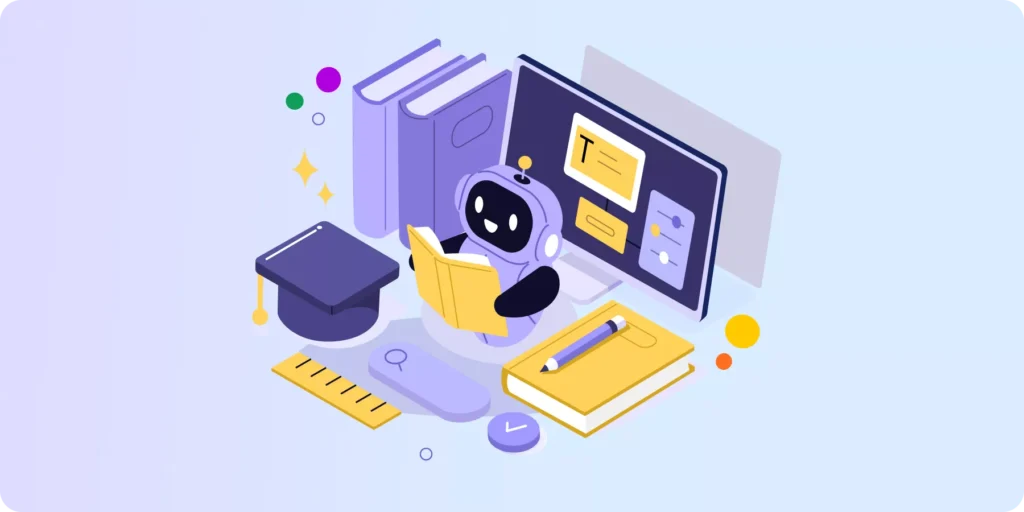Google Classroom management has traveled light years since 2020. This is one of the few positives for which we can thank the pandemic.
While obligatory masks and social distancing have become just an unbelievable memory of the past, advanced technology for Education is one thing that has stayed with us. Remote work and e-learning, (re)born during the pandemic, have shaped the post-COVID world, leaving an indelible mark on our daily lives.
In March 2020, all schools worldwide had to take a giant step toward remote work. A few years later, students and teachers have on their hands new skills and learned digital tools, discovered the value of online resources and communication, and accepted a new, fast-changing reality of e-learning.
What have we learned about Google Classroom management 4 years after the pandemic?
1. Screen Time Challenge
It’s a fact – we are currently facing a pandemic of screens.
Since 2020, the world has been invaded by electronic devices. During the quarantine in the US, children started using them twice as much as before.
They give us plenty of great opportunities, which come with hidden costs. Increased time spent in front of screens can provoke more negative emotions and mental health issues (such as anxiety, irritability, or even depression). Indeed, research shows this happened frequently during quarantine.
Other harmful effects of too much screen time include sleep disturbances, eye strain, and discomfort, among others.
It primarily affects children’s developing brains and behavior. 80% of K-12 educators admitted that increased screen time worsened students’ behavior.
This challenge imposes the responsibility for controlling kids’ screen time on adults – parents and teachers.
E-learning must be balanced with zero-screen time to ensure students’ mental and physical health and improve their ability to learn.
2. Student Security Above All
No one is trying to fight the use of the Internet in the classroom anymore.
E-learning is proving that the online connection opens up a lot of amazing opportunities for teaching many subjects.
But what’s of concern now, especially for parents, are the online threats that children may encounter when using the Internet outside the home.
35% of parents are afraid of violence, 26% of certain content’s addictive nature, and 21% of foul language, according to the BBC survey.
Here, web filtering apps such as GAT Shield come into play.
They meet parents’ needs by monitoring online content available on school devices. K-12 Google Admin can manage students’ screens in real time, control browsing history, and set up alerts for specific words. These can include cyberbullying vocabulary and other types of inappropriate language.
What’s more, porn and self-harm content can be detected and restricted live with automated real-time alert rules.
The e-learning experience will only be fruitful if we start by ensuring online safety and well-being for each student in Google Classroom.
3. E-learning Is No Longer Black Magic
The pandemic has accelerated the development of digital education, which previously was done at a snail’s pace in some places.
Even skeptics and conservative teachers have turned to e-learning, as 98% of the global student population has switched to online classes.
Technology has advanced rapidly since 2020 and has made e-learning accessible and familiar.
This method of learning has become a global trend and mainstream practice.
Everybody has experienced this change in action. Sometimes, we also had to learn to manage new technologies very quickly.
Moving learning to the Internet has enabled teachers to customize learning paths, monitor each student’s educational progress more efficiently, and use multiple multimedia resources and tools available online.
4. Technology Integration Is Key
E-learning, like traditional learning, requires many resources to engage students and teach them successfully.
Following the rapid growth of remote learning due to COVID-19, the education market is rich with tools and resources to facilitate this process.
Google Classroom or whatever e-learning platform you started using at your school during the pandemic is only the beginning.
Technology has taken a new shape in the last four years, and new applications have emerged to make Google Classroom management safer and more effective.
You need to integrate all the tools at your school and adapt to the ongoing changes for Google technology to have a big impact on your students.
For instance, these days, we can’t talk about digital learning without artificial intelligence.
In its era, schools need a tool to wisely manage possible plagiarism in students’ assignments.
With a preventive solution in place (which could be GAT’s Taskmaster, for example), AI-driven applications can be accepted and applied in the classroom usefully.
5. Remote Work Skills Are a Must
In the post-pandemic world, remote or hybrid work has become the new standard. In 2023, almost 13% of full-time employees worked remotely, and 28% in a hybrid model.
Estimates indicate that these numbers will increase.
The same trend is present in educational environments. Both students and teachers adjusted their daily activities after the pandemic outbreak.
Many schools are now practicing remote or blended learning, recognizing their value.
Online collaboration is the new reality. Schools that teach students how to use digital resources, be flexible, learn, and communicate efficiently online are preparing them to meet the demands of the job market.
Just as important as instructing students how to work online is teaching them how to protect themselves from online threats.
Safe file sharing, sensitive data storage, and email management should be part of the new digital skills curriculum of every school.
Learn more about remote work security in Google Workspace.
6. Continuous Learning Is Your Duty
Never stop learning because life never stops teaching.
Lifelong learning is an essential skill in the fast-paced world. The pandemic made us realize that everything can change at any moment.
All schools immediately jumped into e-learning, and this was just the beginning of a huge transformation of modern education.
The school revolution is still happening: advanced mobile devices, artificial intelligence, immersive technology, new e-learning apps…
School admins and teachers must be constantly up to date to provide the safest, most efficient, and cutting-edge solutions to manage digital classrooms.
This is their responsibility to future generations in the e-learning era.
2024 E-Learning Trends in Google Classroom [Admin Must-Read]
Closing Thoughts
The revolutionary impact of the pandemic on education lasts to the present day. Online classes have become part of the school’s reality.
The journey to effective e-learning that began four years ago continues. Let’s keep it exciting and safe for everyone.
Book a demo to discover how GAT’s solutions for education can elevate Google Classroom management to the next level.
Insights That Matter. In Your Inbox.
Join our newsletter for practical tips on managing, securing, and getting the most out of Google Workspace, designed with Admins and IT teams in mind.






